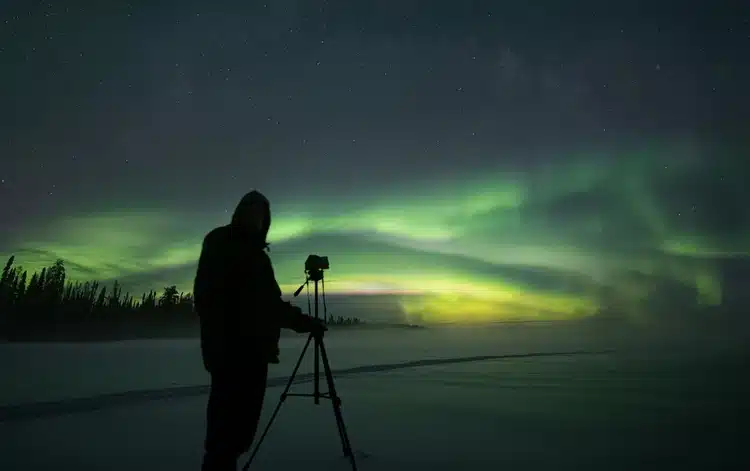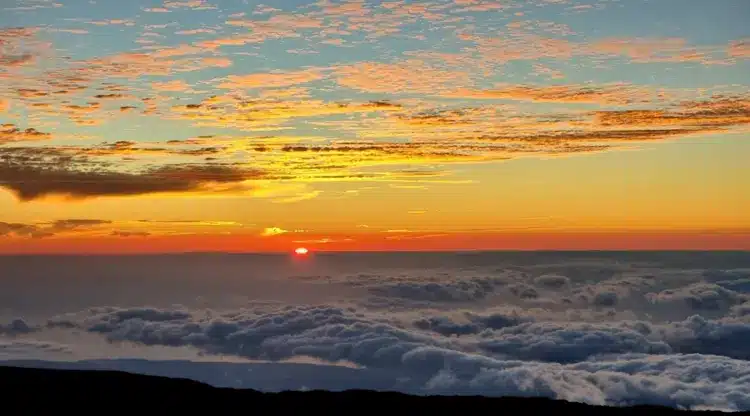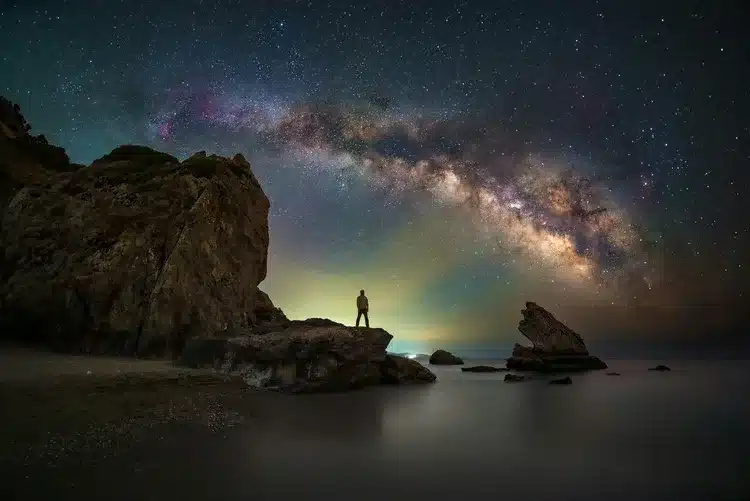Introducing Lowell Telescope
Okay, folks, buckle up because we’re about to embark on a stellar journey through time and space! Even if you’re a space enthusiast, seeing the Lowell Telescope for the first time will give you a profound sense of astronomical history. It’s an experience that truly connects you with the legacy of space exploration.
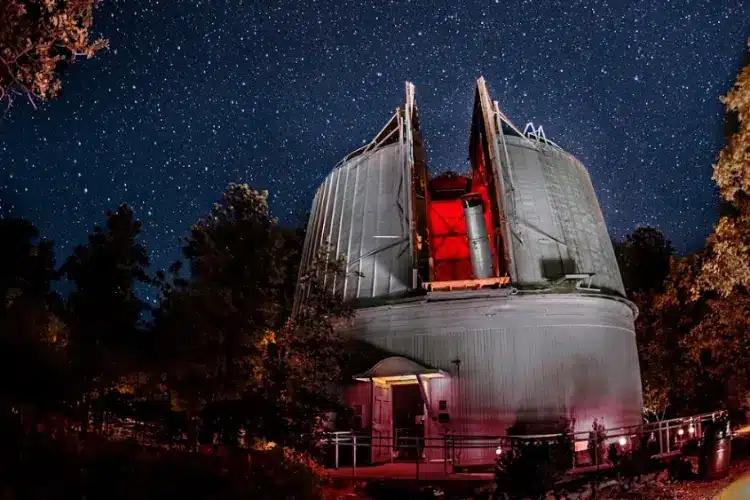
Picture this: a crisp Arizona night, stars twinkling overhead like diamonds scattered on black velvet, and there it stood – the telescope that changed our understanding of the cosmos. It’s not just a bunch of metal and glass; it’s a time machine that’s been peering into the depths of space for over a century!
Did you know that this bad boy played a crucial role in discovering Pluto? Yep, that’s right! The same planet (okay, okay, “dwarf planet” for you sticklers out there) that we all learned about in school was first spotted through the lenses of a Lowell telescope. How cool is that?!
But hey, I’m getting ahead of myself. Let’s rewind a bit and start from the beginning. Trust me, the story of the Lowell Telescope is as fascinating as the celestial bodies it observes!
Table of Contents
The Birth of the Lowell Observatory

So, picture this: it’s the late 19th century, and a dude named Percival Lowell is absolutely obsessed with the idea of life on Mars. I mean, we’re talking next-level obsession here. While most of us worry about what to have for dinner, Lowell was losing sleep over Martian canals!
In 1894, Lowell decided to take his Mars mania to the next level. He thought, “You know what? I’m gonna build my own observatory!” Talk about a hobby upgrade, right? Most people take up knitting or gardening, but not our man Percival. He goes straight for “build a world-class astronomical research facility.” Go big or go home, I guess!
Now, here’s where it gets interesting. Lowell needed to find the perfect spot for his observatory. He wasn’t about to settle for some random backyard. Nope, he wanted the best of the best. After scouting around, he landed on Flagstaff, Arizona. Why Flagstaff, you ask? Well, let me tell you, it wasn’t for the great tex-mex (though that’s a bonus).
Flagstaff had three things going for it:
- High altitude (less atmosphere to peer through)
- Clear skies (because cloudy observatories are about as useful as screen doors on a submarine)
- It was far from city lights (essential for seeing those faint, twinkling stars)
So, Lowell set up shop in Flagstaff, and boom! The Lowell Observatory was born. Little did he know that this decision would change the course of astronomical history. But more on that later!
The Original 24-inch Alvan Clark Telescope

Alright, space fans, let’s talk about the OG star of the show – the 24-inch Alvan Clark Telescope. This beauty was the first big telescope at the Lowell Observatory, and let me tell you, it was a game-changer!
Now, I’m no telescope expert (shocking, I know), but even I can appreciate the craftsmanship of this bad boy. The Alvan Clark & Sons firm was like the Rolls-Royce of telescope makers back in the day. Getting one of their telescopes was like scoring front-row tickets to a sold-out concert – it was a big deal!
The telescope’s main mirror was 24 inches in diameter (hence the name, duh), which was pretty impressive for its time. It’s like having a really big eye to look at the sky. The bigger the eye, the more light it can gather, and the more stuff you can see. Simple, right?
When this telescope first swung into action, it was like giving astronomers super-vision. Suddenly, they could see details on Mars that were invisible before. It was like upgrading from a flip phone to the latest smartphone – mind-blowing!
Speaking of Mars, this is where things get a bit… interesting. Percival Lowell, bless his heart, became convinced he could see canals on Mars through this telescope. Yep, you heard that right – canals. As in, artificial waterways supposedly built by intelligent Martians.
Now, we know today that these “canals” were just an optical illusion. But hey, can you blame the guy for getting excited? Imagine thinking you’ve just discovered alien civil engineering!
Despite this little Martian mix-up, the Alvan Clark Telescope went on to do some pretty amazing things. It helped map the surface of Mars (minus the imaginary canals), observed double stars, and even aided in the search for Planet X (spoiler alert: they found it, and named it Pluto).
So next time you’re stargazing with your little hobby telescope, just remember – you’re following in the footsteps of some pretty incredible technology. Who knows? Maybe you’ll spot a Martian canal of your own! (Just kidding, please don’t report any Martian canals to NASA. They’ve got enough on their plate.)
Beyond Mars: Expanding the Observatory’s Reach
Okay, folks, strap in because we’re about to go on a wild ride through the expansion of the Lowell Observatory. It’s like watching your favorite mom-and-pop store turn into a supermarket chain, but way cooler because, you know, space stuff!
So, remember how Percival Lowell was all about that Mars life? Well, it turns out that the universe is a pretty big place, and there’s a lot more to see than just our red neighbor. The folks at Lowell Observatory figured this out pretty quick, and they started adding new telescopes faster than I add toppings to my pizza.
First up was the 13-inch Pluto Discovery Telescope. Now, this telescope has a story that’s cooler than the other side of the pillow. It was specially designed to hunt for the elusive “Planet X” that Lowell had predicted. And guess what? It actually found it! In 1930, a young astronomer named Clyde Tombaugh used this telescope to discover Pluto. Talk about beginner’s luck, right?

But wait, there’s more! The observatory didn’t stop there. They kept adding new instruments like a kid in a candy store with an unlimited allowance. They brought in telescopes for studying stars, for peering into deep space, for looking at the sun (not directly, of course – that’s a big no-no).
One of my personal favorites is the 72-inch Perkins Telescope. This beast was like the bodybuilder of telescopes – big, powerful, and not to be messed with. It was so heavy that they had to build a special dome just to house it. Talk about high maintenance!
And let’s not forget about the more modern additions. The Lowell observatory now boasts some seriously high-tech gear, like the 4.3-meter Discovery Channel Telescope. Yes, that Discovery Channel. Turns out they do more than just shark documentaries!
All these new telescopes meant that the Lowell Observatory could do way more than just stare at Mars. They could study distant galaxies, track asteroids, measure the speeds of stars, and even look for planets around other stars. It’s like they went from having a pair of binoculars to owning the Hubble Space Telescope (okay, not quite, but you get the idea).
So, the next time someone tells you that size doesn’t matter, just remember the Lowell Observatory. In the world of astronomy, bigger often means better (and by better, I mean able to see really, really far into space). Who knows what they’ll add next? Maybe a telescope the size of Arizona? Hey, an astronomer can dream, right?
Groundbreaking Discoveries Made with Lowell Telescopes

Alright, space cadets, grab your notepads because we’re about to dive into the greatest hits album of the Lowell Telescopes. These bad boys have been dropping astronomical chart-toppers for over a century!
First up, let’s talk about the discovery that put Lowell Observatory on the celestial map – Pluto! Now, I know what you’re thinking, “But isn’t Pluto not a planet anymore?” Well, yes and no. It’s complicated. Like that relationship status you had in college. But back in 1930, Pluto was the hottest thing since sliced bread in the astronomy world.
Picture this: young Clyde Tombaugh, fresh-faced and eager, spending night after night comparing photographic plates of the sky. It’s like the world’s most boring game of spot-the-difference, except the prize is a whole new world! And boom! On February 18, 1930, he spots a tiny dot moving between the images. Ladies and gentlemen, we have a winner! Pluto was discovered, and astronomers everywhere lost their minds.
But wait, there’s more! The Lowell telescopes weren’t one-hit wonders. They kept the hits coming like a cosmic jukebox. Next on the setlist: galactic redshifts. Now, I know “galactic redshifts” sounds like a rejected name for a sci-fi rock band, but stick with me here.
In the 1910s and 1920s, Vesto Slipher used the Lowell telescopes to measure the speeds of galaxies. He found out that most galaxies are moving away from us, and fast! It’s like the universe is playing a giant game of “get away from the Milky Way.” This work laid the groundwork for the Big Bang theory. Yes, the theory about the universe, not the TV show.
But the Lowell telescopes weren’t done yet. They were like that friend who always has to one-up your story. In recent years, they’ve been key players in studying Kuiper Belt objects. “What’s the Kuiper Belt?” I hear you ask. Well, imagine a cosmic junkyard at the edge of our solar system, full of icy bodies left over from its formation. It’s like the solar system’s attic, where it keeps all the stuff it doesn’t know what to do with but can’t bear to throw away.
Studying these objects is like cosmic archaeology. We’re digging through the leftovers of our solar system’s birth to understand how we got here. And the Lowell telescopes have been right at the forefront, discovering new Kuiper Belt objects and helping us understand their properties.
One of my favorite discoveries is the fact that some of these Kuiper Belt objects have moons. Imagine that – tiny worlds at the edge of our solar system with their own even tinier moons.
The best part? The Lowell telescopes are still at it. They’re like the Energizer Bunny of astronomy – they just keep going and going. Who knows what they’ll discover next? Maybe they’ll find the galaxy’s best coffee shop, or the universe’s lost and found. Hey, in astronomy, anything’s possible!
So, the next time you’re stargazing, give a little nod to the Lowell telescopes. They’ve been uncovering the secrets of the universe for over a century, and they’re not done yet. It’s like they’ve got a backstage pass to the greatest show in the universe – and they’re kind enough to share what they see with the rest of us!
The Lowell Observatory Today

Alright, space enthusiasts, let’s fast-forward to today. The Lowell Observatory isn’t just some dusty old relic – it’s like that cool grandparent who’s still hip with the times and probably has more Instagram followers than you!
These days, the observatory is buzzing with activity. It’s like a beehive, but instead of honey, they’re producing sweet, sweet science. They’ve got research programs that would make even the most hardcore science nerds weak at the knees.
One of their big focuses right now is the search for exoplanets. That’s right, they’re planet hunting! But not in our solar system – they’re looking for planets around other stars. It’s like trying to spot a firefly next to a spotlight from a hundred miles away. Tricky stuff, but they’re nailing it!
They’re also doing some pretty cool work on near-Earth asteroids. You know, the kind of space rocks that make dinosaurs nervous. Don’t worry, though – they’re not predicting any imminent impacts. They’re just keeping an eye out, like a cosmic neighborhood watch.
But here’s the thing that really blows my mind – the Lowell Observatory isn’t just for astronomers with PhDs and pocket protectors. They’ve gone all out on public outreach and education. It’s like they’re the cool science teacher you wish you had in high school.
They offer public stargazing programs that’ll make you feel like a kid again. I mean, have you ever looked through a high-powered telescope? It’s like putting on glasses for the first time, but instead of seeing leaves on trees, you’re seeing the rings of Saturn!
And get this – they have something called the Giovale Open Deck Observatory. It’s like an all-you-can-eat buffet, but for telescopes. You can hop from one to another, checking out different celestial objects. It’s perfect for those of us with astronomical ADHD.
They’ve also got this awesome visitor center called the Starry Skies Shop. Now, I’m not usually one for gift shops, but this place is different. Where else can you buy a plush version of a tardigrade (you know, those microscopic water bears that can survive in space) or a mug with the periodic table on it? It’s nerd heaven!
But it’s not all fun and games. The Lowell Observatory is still a serious research institution. They’re collaborating with other astronomical big shots from around the world. It’s like the Avengers of astronomy, all coming together to solve the mysteries of the universe.
One of their coolest collaborations is with the Navy Precision Optical Interferometer. Now, I can barely pronounce that, let alone understand how it works, but from what I gather, it’s like having super-vision for stars. They can measure the sizes of stars more accurately than ever before. It’s mind-boggling stuff!
So, the Lowell Observatory today is this amazing mix of cutting-edge research and public-friendly astronomy. It’s keeping Percival Lowell’s dream alive while pushing the boundaries of what we know about the universe. And the best part? They’re happy to share it all with us regular folks. It’s like they’re saying, “Come on in, the universe is fine!” And let me tell you, it’s a pretty amazing invitation to accept!
Visiting the Lowell Observatory: A Stargazer’s Guide
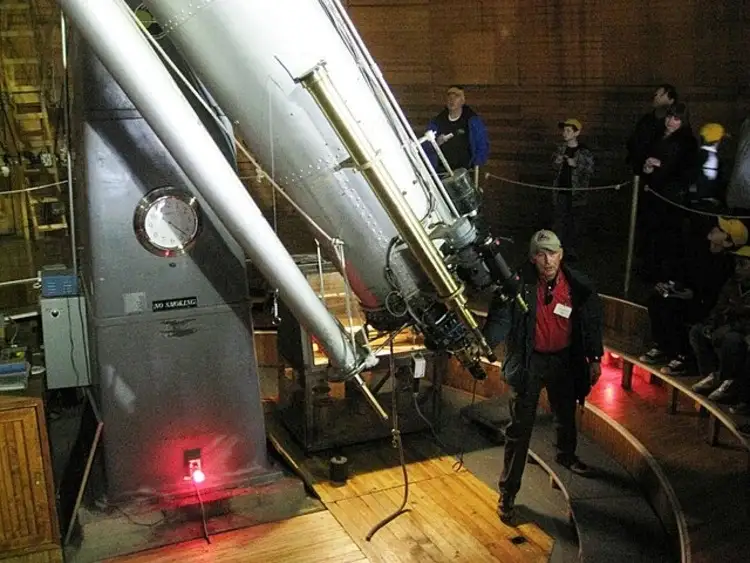
Alright, fellow cosmic explorers, buckle up because I’m about to take you on a virtual tour of the Lowell Observatory. And let me tell you, it’s more exciting than finding an extra French fry at the bottom of your fast-food bag!
First things first – location! The Lowell Observatory is perched atop Mars Hill in Flagstaff, Arizona. Yes, you read that right – Mars Hill. It’s like they knew they were destined for greatness from the get-go! Now, don’t worry about needing a spacecraft to get there. It’s actually pretty accessible by good old-fashioned Earth transportation.
When you arrive, you’ll feel like you’ve stepped onto the set of a sci-fi movie. Domes dotting the landscape, telescopes pointing skyward – it’s enough to make any space nerd’s heart skip a beat.
Now, let’s talk about tours. The Lowell Observatory offers guided tours that are out of this world – pun absolutely intended. You’ve got a few options:
- The Classic Tour: This is like the greatest hits album of the observatory. You’ll see the Clark Telescope, learn about the discovery of Pluto, and get a crash course in astronomy that’s more entertaining than any high school science class.
- The Ultimate Tour: This is for those who want to go deeper than deep space. You’ll get to see parts of the observatory that are usually off-limits to the public. It’s like getting backstage passes to a cosmic rock concert!
- Special Tours: These change with the seasons and celestial events. Meteor shower tour? Yes, please! Solar eclipse expedition? Sign me up!
But here’s the real kicker – the night programs. This is where the magic happens, folks. You’ll get to look through telescopes and see the night sky like never before.
Now, let’s talk about timing. The best time to visit? Well, that depends on what you want to see. Summer nights are great for star clusters and the Milky Way. Winter brings crisp, clear skies perfect for spotting distant galaxies. Spring and fall? They’re awesome for catching planets. But honestly, any time is a good time at Lowell. The universe is always putting on a show!
Here’s a tip: check their event calendar before you go. They often have special events that’ll knock your astronaut socks off.
Oh, and don’t forget to dress for success! By success, I mean not freezing your asteroids off. Flagstaff nights can get chilly, even in summer.
Now, I know what you’re thinking – “This all sounds great, but what if I’m not an astronomy buff?” Well, fear not, my friend! The staff at Lowell are like the best teachers you never had. They’re passionate, patient, and have a knack for making complex cosmic concepts digestible for us mere mortals.
They’re so good at what they do, you might find yourself becoming an astronomy enthusiast before the night is over. Don’t say I didn’t warn you!
And here’s a little secret – the Lowell Observatory isn’t just about nighttime stargazing. They’ve got daytime activities too! You can check out the sun through special solar telescopes. It’s like looking at the world’s biggest campfire, minus the s’mores.
So, there you have it, folks – your guide to visiting the Lowell Observatory. It’s an experience that’s sure to leave you starry-eyed and full of wonder. Just remember to keep your feet on the ground while your mind’s in the stars. We don’t want any floating away incidents!
The Future of the Lowell Telescope and Observatory

Alright, space cadets, strap on your jetpacks because we’re about to blast off into the future of the Lowell Observatory! And let me tell you, it’s looking brighter than a supernova!
First up on the cosmic agenda: upgrades! The folks at Lowell aren’t content with resting on their laurels. Nope, they’re always looking for ways to soup up their telescopes. It’s like Pimp My Ride, but for astronomical instruments!
One of the big projects on the horizon is the renovation of the iconic Clark Telescope. Now, I know what you’re thinking – “Why mess with a classic?” Well, it’s not about changing it, it’s about preserving it for future generations. It’s like giving your grandpa a hip replacement so he can keep dancing at family weddings. The goal is to keep this bad boy scanning the skies for another century!
But it’s not just about maintaining the old stuff. Lowell is also investing in cutting-edge technology. They’re working on new instruments that’ll make their current telescopes even more powerful. It’s like giving Superman x-ray vision on top of his already impressive superpowers!
One of the coolest upcoming projects is their involvement in the Large Synoptic Survey Telescope (LSST) project. This beast of a telescope will survey the entire visible sky every few nights. It’s like having a security camera for the universe! Lowell will be using data from this telescope to study everything from near-Earth asteroids to the mysterious dark energy that’s making our universe expand.
Speaking of mysterious stuff, Lowell is also gearing up to dive deeper into the study of exoplanets. They’re developing new techniques to not just find these alien worlds, but to study their atmospheres too. Who knows? Maybe they’ll be the first to discover signs of life on another planet! Imagine that – first Mars canals, then Pluto, and now alien life. Lowell would be hitting the astronomical trifecta!
But it’s not all about hardcore science. Lowell is also looking to expand its education and outreach programs. They’re planning new exhibits, more interactive displays, and even virtual reality experiences. Soon, you might be able to take a VR tour of Mars or float through the rings of Saturn, all from the comfort of the visitor center. How cool is that?

They’re also working on making astronomy more accessible to everyone. There are plans for remote observing programs, where school kids from all over the country can control telescopes at Lowell from their classrooms. It’s like having a field trip to Arizona without leaving your school!
And get this – they’re even talking about building a planetarium. I mean, as if the real night sky wasn’t enough, they want to give us a digital one too!
So, what does all this mean for us stargazers? Well, it means that the Lowell Observatory is going to keep blowing our minds for years to come. They’re going to keep pushing the boundaries of what we know about the universe, and they’re going to keep finding new ways to share that knowledge with all of us.
The future of Lowell is bright, my friends. It’s a future full of discovery, wonder, and maybe even a few more world-changing breakthroughs. Who knows? Maybe the next time you visit, they’ll have found evidence of Martian canals after all! (Okay, probably not, but hey, in astronomy, you never know!)
So keep your eyes on the skies and your ears to the ground, because Lowell Observatory is just getting started. The best is yet to come, and I don’t know about you, but I can’t wait to see what they discover next!
Wrapping Up
Whew! What a journey we’ve been on, folks! From Percival Lowell’s Martian dreams to cutting-edge exoplanet research, we’ve covered more ground than a rover on Mars. And let me tell you, my brain feels as expanded as the universe itself!
You know, when I first started digging into the story of the Lowell Telescope, I thought it would be a dry history lesson. Boy, was I wrong! It’s been more like a cosmic roller coaster ride, full of twists, turns, and mind-bending discoveries. Who knew a bunch of metal and glass on a hill in Arizona could lead to so much excitement?
We’ve seen how one man’s obsession with Mars kickstarted a revolution in astronomy. We’ve witnessed the birth of new planets (well, dwarf planets – sorry, Pluto!) and peered into the depths of distant galaxies. We’ve explored the cutting-edge research happening right now and taken a sneak peek at what’s coming down the cosmic pipeline.
But here’s the thing that really sticks with me – the Lowell Observatory isn’t just about big discoveries and fancy equipment. It’s about making the wonders of the universe accessible to all of us. It’s about inspiring the next generation of stargazers, scientists, and dreamers.
So, here’s my challenge to you, dear reader: Go out and explore the night sky! You don’t need a giant telescope or a PhD in astrophysics. All you need is curiosity and a sense of wonder. Who knows? Maybe you’ll be the one to make the next big discovery. After all, Pluto was found by a guy who started out as an amateur astronomer with a passion for the stars.
And if you ever find yourself in Flagstaff, Arizona, do yourself a favor and visit the Lowell Observatory. Trust me, it’s an experience you won’t forget. Just remember to bring a jacket – those Arizona nights can be chilly!
So, until next time, keep looking up. The universe is a pretty amazing place, and thanks to places like the Lowell Observatory, we’re learning more about it every day. And that, my friends, is pretty darn cool.



